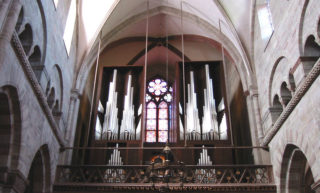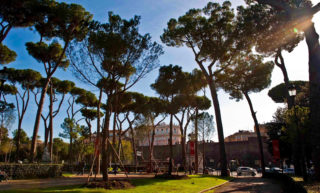A slow belly dance and a fool’s cap
Sinfonieorchester Basel
18 September 2019
Martin Grubinger, percussion
Iwona Sobotka, soprano
Michal Nesterowicz, conductor
Fazil Say - Concerto for Percussion and Orchestra
Gustav Mahler - Symphony No. 4
As with all the concerts taking place in the Musical Theater, this month’s program offers an element of entertainment. Without compromising the serious character of the composition, a concert for percussion inevitably provides some degree of diversion. However, the composer, Fazil Say, is talented enough to make it into much more than an amusement ride.
Although Say is best known as a pianist, he has always been a multi-talented musician. His first composition at the age of 16 dates back to 1986. Fourteen years later, he was also the founder of a successful jazz ensemble.
The concert, commissioned by the Sinfonieorchester Basel and two other parties, explores the breadth and depth of percussion by focusing on one or two different instruments in each movement. Using this diversity, Say also compensates for the lack of melodious possibilities of some of the percussion instruments. Moreover, it gives the soloist a chance to show his or her skills, not just on one instrument, but an array of them.
Despite his national background, Say doesn’t use any Turkish percussion in the concerto, but for the observant listener, there are several other features that unveil the composer’s nationality, such as the score markings “Slow belly dance” and “In Istanbul gypsy style”. Say also uses the so-called Anatolian scale, an adjustment of the regular octave, in his composition.
The concerto is dedicated to the soloist, Martin Grubinger, possibly the best percussionist of his generation and a strong advocate of his instruments. Not only Say has accepted the invitation to write for him; other prominent composers, such as Eötvös, Cerha and Tan Dun, have preceded him.
Mahler’s fourth symphony may not seem an obvious pairing with Say’s concerto or let alone have a link to entertainment, until you realise that Mahler’s original intention was to write a “symphonic humoresque”, which later turned into a full-fledged symphony, although smaller, both in length and required size of the orchestra than its predecessors.
The bells heard at the symphony’s opening don’t depict a musical sleigh ride, as is often thought, but are the bells of a fool’s cap.
The second movement, representing the Grim Reaper, puts the listener on wrong footing since the overall mood of the symphony is one of “an undifferentiated blue sky”, as Mahler himself has put it. “The Scherzo is so mystical, confused and uncanny that it will make your hair stand on end.” However, the following Adagio shows “it wasn’t meant so seriously after all.”
The symphony culminates in the song Das himmlische Leben, in which a child describes, with mild, naive humour, what life in heaven is like. While the chosen may live like angels, they kill innocent animals to eat. Who talks about nectar and ambrosia? To underline the child’s innocence Leonard Bernstein, among others, preferred to have a boy soprano sing the fourth movement’s song.
The subtle humour – or irony if you wish – pervading this otherwise ethereally beautiful symphony may not be an amusement ride, but it may well trigger a wry smile.
These English program notes have been published in the magazine (No. 2, 2019/2020) of the Sinfonieorchester Basel.
Photo credit: Simon Pauly








Comments